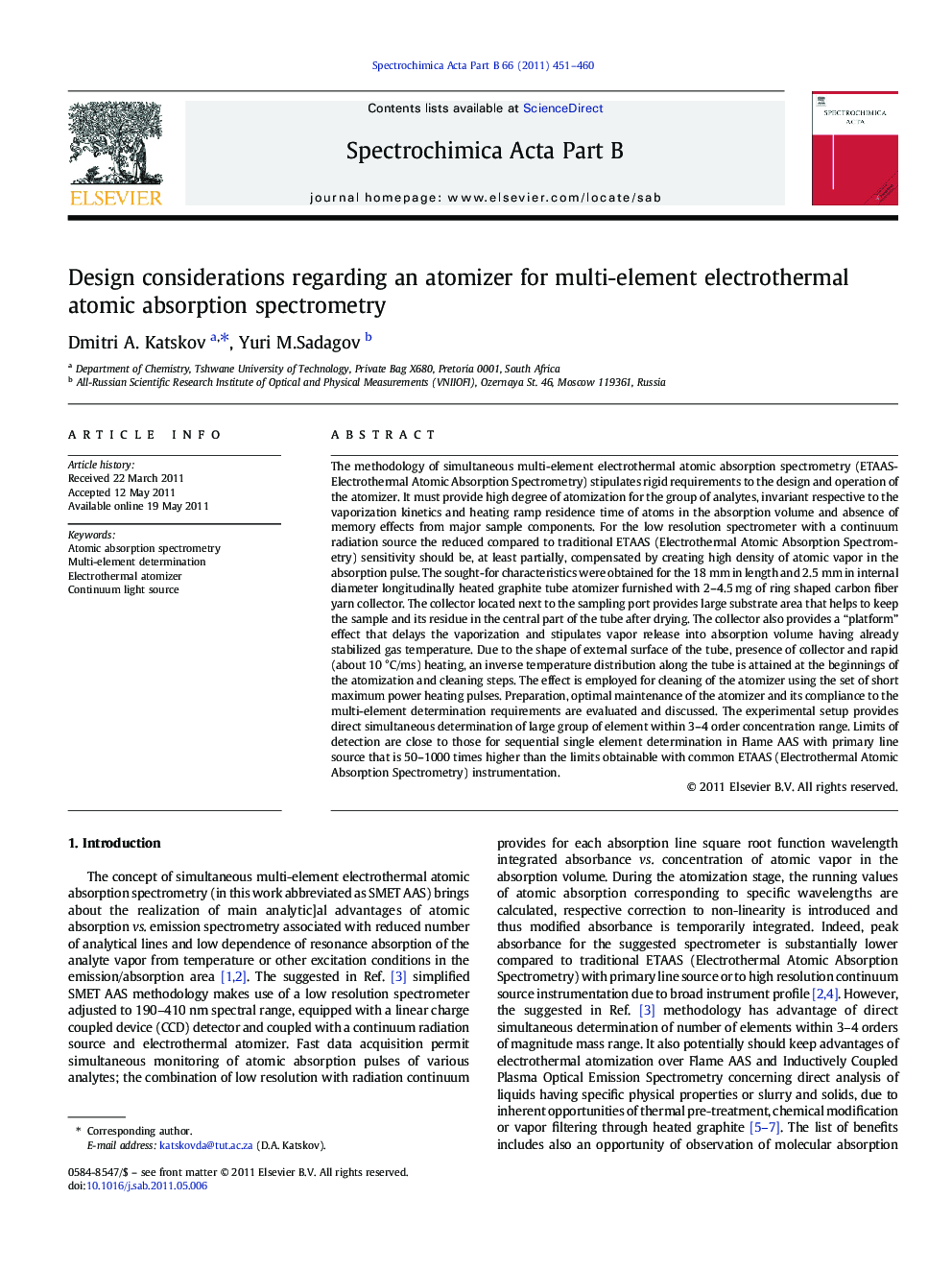| Article ID | Journal | Published Year | Pages | File Type |
|---|---|---|---|---|
| 1240776 | Spectrochimica Acta Part B: Atomic Spectroscopy | 2011 | 10 Pages |
Abstract
The methodology of simultaneous multi-element electrothermal atomic absorption spectrometry (ETAAS-Electrothermal Atomic Absorption Spectrometry) stipulates rigid requirements to the design and operation of the atomizer. It must provide high degree of atomization for the group of analytes, invariant respective to the vaporization kinetics and heating ramp residence time of atoms in the absorption volume and absence of memory effects from major sample components. For the low resolution spectrometer with a continuum radiation source the reduced compared to traditional ETAAS (Electrothermal Atomic Absorption Spectrometry) sensitivity should be, at least partially, compensated by creating high density of atomic vapor in the absorption pulse. The sought-for characteristics were obtained for the 18 mm in length and 2.5 mm in internal diameter longitudinally heated graphite tube atomizer furnished with 2-4.5 mg of ring shaped carbon fiber yarn collector. The collector located next to the sampling port provides large substrate area that helps to keep the sample and its residue in the central part of the tube after drying. The collector also provides a “platform” effect that delays the vaporization and stipulates vapor release into absorption volume having already stabilized gas temperature. Due to the shape of external surface of the tube, presence of collector and rapid (about 10 °C/ms) heating, an inverse temperature distribution along the tube is attained at the beginnings of the atomization and cleaning steps. The effect is employed for cleaning of the atomizer using the set of short maximum power heating pulses. Preparation, optimal maintenance of the atomizer and its compliance to the multi-element determination requirements are evaluated and discussed. The experimental setup provides direct simultaneous determination of large group of element within 3-4 order concentration range. Limits of detection are close to those for sequential single element determination in Flame AAS with primary line source that is 50-1000 times higher than the limits obtainable with common ETAAS (Electrothermal Atomic Absorption Spectrometry) instrumentation.
Related Topics
Physical Sciences and Engineering
Chemistry
Analytical Chemistry
Authors
Dmitri A. Katskov, Yuri M.Sadagov,
